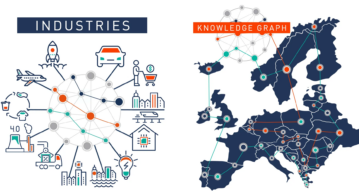Machine learning at scale, at cost, at work: DataRobot’s unique platform
A few years ago, many companies began to seize on the possibilities inherent in artificial intelligence (AI) as a data processing method that could yield impressive results which translated into business advantages: lower costs perhaps, or increased sales, more cross-selling, or renewal successes – the list is as varied as there are businesses.
Cognitive routines emanating from academic research have created a generation of machine learning methods that have the potential to help organizations of all sizes. But there are drawbacks. Writing or editing routines in R or Python, for example, may take a day or two for each specific instance or market segment, and that solution isn’t scalable, plus it places emphasis on the data science teams’ abilities. Lose a key team member or two, and the entire organization can suffer.
Into this scenario comes DataRobot, the inventor of automated machine learning that empowers companies to become AI-driven enterprises. The purpose of the platform is to make data professionals’ lives easier by creating machine learning models that can be implemented to solve complex business problems.
The DataRobot solution is not an experimental research vehicle, but instead, a business-focused platform. It is used by both data scientists and citizen data scientists to help them create viable, usable results in a fraction of the time that it used to take to code by hand.
In the case of Velocity, the frequent flyer program of Virgin Australia, DataRobot enabled them to make their marketing more targeted and more relevant for their customers. By analyzing the data they collect, including such information as where customers fly and how they pay for it, Velocity has been able to deliver precision, accuracy, and relevance in their offerings to customers like never before.
“DataRobot is allowing us to target with enormous precision segments of our base for particular types of offers,” said Karl Schuster, CEO of Velocity Frequent Flyer. “It’s enabling us to personalize at a level we’ve never contemplated before. We know exactly where you’re flying, we know which credit card you used to pay for the ticket, we know where you shop for your fuel. Then we try to bring all that data together to work out how we can serve you the most relevant and best offers that will deliver value for you as a customer,”
Ascendas-Singbridge Group was tackling Singapore’s parking problems. With $20 billion in assets under management, the decision to deploy machine learning to help forecast parking lot capacity in its dozens of venues across the city had exposed massive potential, but extracting results proved more cumbersome.
Being able to predict car park capacity at their various properties would allow the Group to optimize how they were operating their services, improving the experience for visitors and drivers, and, therefore, increasing the company’s turnover. DataRobot’s Automated Time Series meant getting results much quicker. According to Lionel Teo, manager at Ascendas, the stress was always on the commercial imperative.
“When we start[ed] to seriously think about investing in [a predictive analytic platform], ROI emerged as a key consideration,” he said. That sentiment was echoed by Leong Hiong Yee, the overall manager of IT Enterprise Information Management function:
“DataRobot allows our IT developers to pick up supervised machine learning easily and pick up the tool and immediately start working on developing predictive models. It lowers the steep learning curve of machine learning and unveils the complexity of the underlying models from the developers.”
The complexities of the problems being solved were daunting, but the potential economic return was apparent. How full a car park would be on any given day, at any time, plus the split between season-pass users and pay-as-you-park customers were key considerations. It was a problem that could be processed by machine learning, but the costs would be prohibitive without the help of the DataRobot platform.
For example, if the car park X at property Y is usually primarily occupied by season pass parkers Monday to Thursday weekdays, it could be used by pay-per-hour customers Friday to Sunday with an elastic pricing model to encourage the filling of empty spaces. Scale that type of possibility up across the company’s many hundreds of properties, and the potential becomes obvious, even with massive seasonal differences and shifting space occupation patterns weekly or even daily.
Businesses interested and actively involved in machine learning face an interesting, yet frustrating, dilemma. The possibilities are obvious, but the resources needed to use AI technology to the necessary extent are not available at a viable cost point. That is, until DataRobot’s services become available. Your first steps comprise to learn more about the company, read more about how automated ML drives competitive advantage in marketing, or request a no-obligation demonstration.









